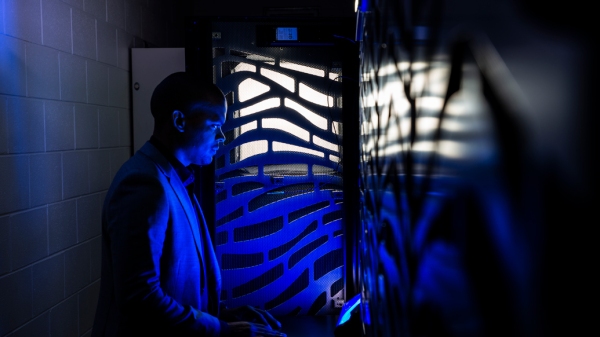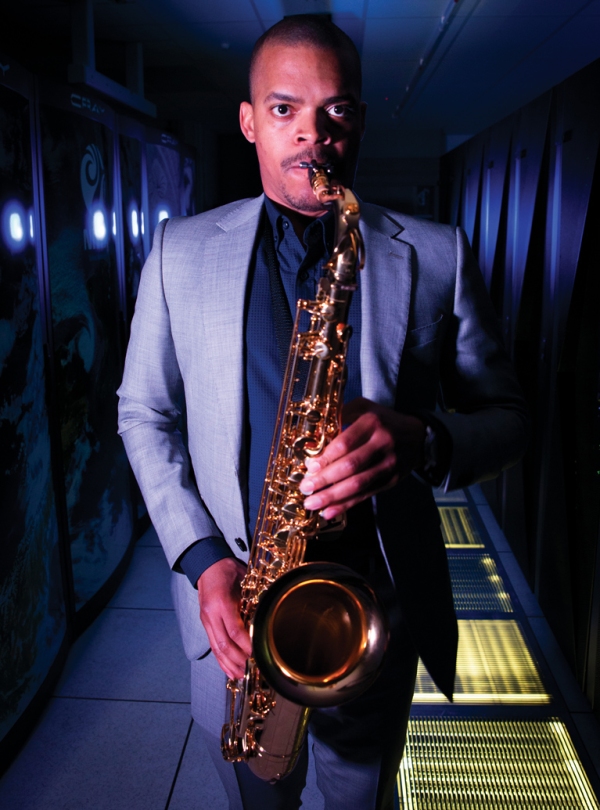When Kameron Christopher rates American saxophonist and composer Wayne Shorter as the greatest living exponent of the instrument – he is talking from first-hand experience.
Los Angeles born and bred, Christopher has played professionally with some big names. Along with Shorter, he’s turned out with Herbie Hancock, Horace Silver, Stevie Wonder, George Clinton and Macy Gray – to name just a few.
Christopher is NIWA’s first Chief Scientist for High Performance Computing and Data Science and, in addition to his sax, he brings an impressive array of data analytics credentials to the table.
Notes, numbers, fractions, frequencies – music, mathematics and science have a lot in common.
“They’re all about patterns,” says Christopher.
It’s a space he is deeply familiar with. Among an alphabet soup of qualifications gained in the USA and New Zealand, Christopher has post-graduate letters in music signal processing and the development of artificial intelligence (AI), including from Berklee College of Music, CalArts and Victoria University of Wellington.
Since coming to New Zealand seven years ago he’s plied his computing and data trade with AI start-ups and big corporates – notably at Westpac New Zealand where he led the development of a wholesale data and analytics transformation strategy.
Machine learning is a subset of AI where computers automatically learn and improve from experience without having to be programmed.
Sounds like something from an Isaac Asimov novel. But far from it. Machine learning is increasingly common across many disciplines, including NIWA’s environmental sciences. Coupled with the processing power of NIWA’s High Performance Computing Facility, it is used to analyse bigger, more complex data, and deliver faster, more accurate insights.
However, don’t worry, the robots aren’t taking over. For all the number crunching and data processing, Christopher is adamant that humans remain the key to the equation.
The computer is looking for a specific kind of pattern, he explains. “It does one thing. People have a more holistic, intuitive view and they are pivotal to interpreting how it all fits together.”
With a nine-word job title, Christopher’s new position reflects the multidisciplinary nature of NIWA’s science and the fact that high speed computing and big data are now essential tools.
Each year, NIWA researchers collect terabytes of spatial and temporal data, spanning climate, marine and freshwater disciplines. He sees his challenge as maximising the value of that data and promoting the opportunities advanced AI and data technologies can bring.
“Machine learning and AI, combined with the capabilities of high-performance computing, let researchers recognise patterns in data that weren’t always so apparent in analysis."
“There’s lots of creativity and innovative ideas here at NIWA. We want to help with that and accelerate the adoption of new research capability,” he says.
“It’s about enabling our researchers to gain more actionable insights from information so they can drive more innovation. High-performance computing and data science can help with that.”
Christopher is upbeat about the potential of AI and machine learning technology. “Good, reliable data gets produced, fast. Data that augments and assists human-driven processes and skills, and, ultimately, helps us solve real-world problems.”
He says New Zealand has a history of producing top notch AI and research. Some of the tools that have come out of this country are now used as industry standard around the world. He believes it’s a domain we’re good at and have an opportunity to explore. Plus, we have the capabilities.
Put it all together and, for Christopher and NIWA, data science and high-performance computing is a tune worth playing.
This article forms part of Water & Atmosphere 23, read more stories from this series.


